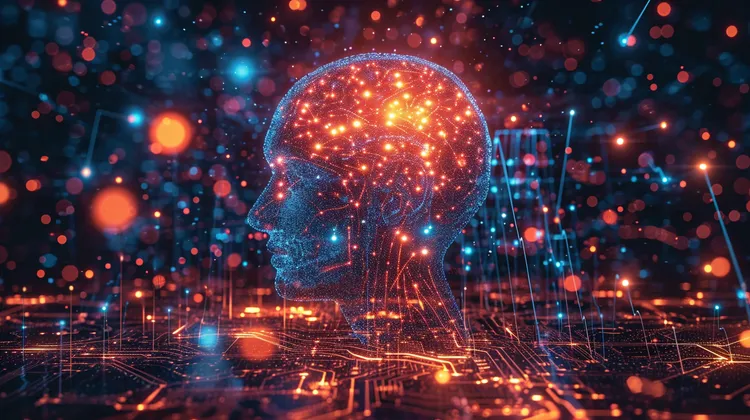The advent of Web3, a term coined to describe the next phase of the internet – one that is decentralized, blockchain-based, and embodies user sovereignty – has given rise to an exciting and dynamic AI ecosystem. As these technologies converge, it becomes increasingly crucial to understand the contours of this burgeoning landscape and its potential implications for the future of online interaction, data management, and artificial intelligence.
Web3 represents a radical departure from the centralized structures of Web2, where data is largely controlled by a few tech giants. Instead, Web3 envisages a world where users have control over their own data, identities, and digital assets, thanks to the transparency and immutability of blockchain technology. This transformation paves the way for a new breed of AI systems that operate on top of decentralized networks, offering enhanced privacy, security, and user control.
At the heart of Web3’s AI ecosystem are decentralized autonomous organizations (DAOs). DAOs are organizations governed by smart contracts on the blockchain, and they often leverage AI to facilitate decision-making processes and automate operations. By integrating AI, DAOs can process vast amounts of information, predict outcomes, and execute tasks without direct human intervention, thereby creating a more efficient and democratized organizational structure.
Another key component of Web3’s AI ecosystem is decentralized data marketplaces. These platforms allow individuals to monetize their personal data by offering it to AI developers who train machine learning models. Unlike traditional data markets, participants in decentralized data marketplaces retain ownership and control over their data, ensuring that privacy is maintained while fostering an open and competitive environment for AI innovation.
Tokenization plays a significant role in Web3’s AI landscape. AI-driven services can be tokenized, meaning they are represented by digital assets on the blockchain that can be traded. This creates a new economic model for AI development where creators are directly rewarded for their contributions, and users can invest in AI solutions they believe in. This model promotes a more equitable distribution of wealth and resources within the AI sector.
Interoperability is a foundational principle in Web3, promoting seamless interactions between different blockchain networks and AI services. For AI to fully flourish in this ecosystem, it must be able to draw insights from diverse sources and work across multiple platforms. Achieving this requires collaborative standards, open-source frameworks, and shared protocols that ensure AI models can communicate and learn from each other, regardless of the underlying technology.
The fusion of AI and Web3 also brings about edge computing, allowing AI computations to occur on user devices rather than centralized servers. This distribution of computational tasks not only enhances user privacy but also reduces latency, leading to faster and more responsive AI applications. This paradigm shift moves the internet closer to a truly decentralized state where power is in the hands of the many rather than the few.
Machine learning and neural networks gain an additional layer of transparency when integrated with blockchain technology. The immutable nature of the blockchain ensures that the processes and decisions made by AI systems are recorded permanently, providing an audit trail that can be used to explain AI behavior. This is particularly important as AI becomes more complex and essential to critical decision-making processes.
As the AI ecosystem within Web3 matures, governance issues surface. Decision-making in AI development and deployment must be transparent and democratic, leading to the birth of governance tokens that grant holders voting rights on key issues. This token-based governance structure ensures that stakeholders can influence the direction of AI projects, promoting a more inclusive and decentralized approach to AI governance.
AI-powered oracles are another component of Web3’s expanding AI market, serving as bridges between blockchain smart contracts and the outside world. They provide external data that triggers the execution of smart contracts. By leveraging AI, these oracles can become more sophisticated, offering predictive capabilities that enable smart contracts to operate based on anticipated events or market conditions.
To fully harness the potential of AI in Web3, a strong emphasis on ethical considerations and regulatory compliance is necessary. The very nature of decentralized systems poses challenges when it comes to implementing and enforcing regulations. Pioneering projects are emerging that use AI to monitor and comply with regulatory frameworks automatically, ensuring that Web3 services operate within legal boundaries while maintaining their decentralized ethos.
Web3’s burgeoning AI ecosystem holds the promise of a more equitable, decentralized, and secure internet. As smart contracts, DAOs, token economies, and edge computing become increasingly intertwined with AI, the possibilities for innovation are vast. Yet, amidst this technological revolution, it is imperative to maintain focus on the ethical and governance aspects, ensuring that the Web3 landscape evolves in a way that ultimately serves the best interests of all its users. As we venture further into the realms of Web3 and AI, one thing remains clear: the ecosystem is poised for significant growth and will demand our careful attention to navigate its complex and rewarding terrain.




Honestly, Web3 seems like a playground for tech elites rather than something for the average user.